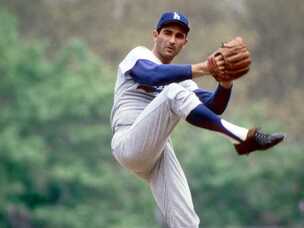 by Julian Spivey When Indianapolis Colts quarterback Andrew Luck stunned the sports world on Saturday, August 24 by announcing his retirement at the age of 29 it started a conversation of the most shocking early retirements in the history of sports. Luck’s retirement is certainly shocking due to his age and his stature in the game as likely one of the NFL’s five best quarterbacks, but the recent focus on the game’s injuries might make decisions like the one made by Luck over the weekend more commonplace. Among the shocking early retirements that many brought up after Luck’s decision where two of the greatest running backs in NFL history: Jim Brown’s decision to focus on a Hollywood acting career retiring from the Cleveland Browns at 30 years old as the league’s all-time leading rusher and Barry Sanders decision in 1999 to retire at 31 less than 1,500 yards away from Walter Payton’s all-time rushing record at the time. Then you have the early retirements of Michael Jordan and Magic Johnson in the NBA, both of whom eventually returned to the league, though with Jordan having much more time and success. Jordan’s retirement followed the murder of his father and his interest in playing professional baseball. Johnson’s was health related after contracting HIV. But, of all of the shocking sports retirements many are forgetting about the time when the best pitcher in Major League Baseball, perhaps the greatest to ever set perch upon a pitching mound, Sandy Koufax walked away from the game at the height of his career in 1966 at the age of 30 (the same age and year Jim Brown called it quits). Koufax had been the game’s most dominant pitcher throughout the early-to-mid 1960s for the Los Angeles Dodgers after beginning in the late ‘50s with the team in Brooklyn to average success. Through the first seven full seasons of his career (more than half of it in total) Koufax was only 54-53 with an ERA more than a full run higher than what his final tally would be. The combination of entering a pitcher friendly Dodgers Stadium in 1962, his previous L.A. home at the Los Angeles Coliseum had a left field line that was a measly 250-feet from home plate, Dodgers scout Kenny Myers fixing a hitch in his wind-up and MLB expanding the strike zone in 1963 Koufax became a completely different pitcher. From 1962 through his final season of 1966 Koufax would lead the National League every season in ERA with a career best of 1.73 coming in his final season. It would be the third time in a four year span he would have an ERA under 2.00, and the year that it was above it was barely at 2.04. Koufax had gone from a .500 career pitcher over the first part of his career to a 111-34 record over the last five years of his career, winning a career high 27 games in the final season of his career. In the final four years of his career Koufax would win the Cy Young Award in the N.L. three times, including a Most Valuable Player award in 1963. He would also lead the N.L. in strikeouts in three of those seasons topping 300 Ks every time. Koufax led the Dodgers to World Series titles in 1963 and 1965, winning the MVP of the series both times. He would go 4-1 in those World Series appearances. His final game in the league would be in losing fashion against the Baltimore Orioles in the 1966 World Series, which the Orioles would go on to win, but he pitched well only allowing one earned run in six innings. It was his third start in just eight days. His career World Series ERA was 0.95. Koufax threw four no-hitters, the second most all-time in MLB history behind Nolan Ryan’s seven, during his career and a perfect game against the Chicago Cubs on September 9, 1965. There’s no telling how many more no-nos he might have thrown had he pitched into his 30s. Koufax had been pitching through pain over the last two years of his career, despite those being arguably the two finest seasons he’d ever pitch. He was told by a doctor after a spring training outing in 1965 that left his arm black and blue and hemorrhaging that he’d eventually lose use of his arm. He would doctor himself with numerous medications, shots and balms just to get through his outings. After the 1966 season he decided enough was enough and to walk away from the game while he could still feel and use his arm. When it comes down to it Koufax was leaving the game back then for the same reasons Luck is leaving the gridiron now. He wanted a life after his career in which he wasn’t completely destroyed by pain. He left baseball on his own terms, but still at the top of his game … leaving the rest of us to wonder just what else he could’ve done in his legendary career.
0 Comments
Leave a Reply. |
Archives
July 2024
|